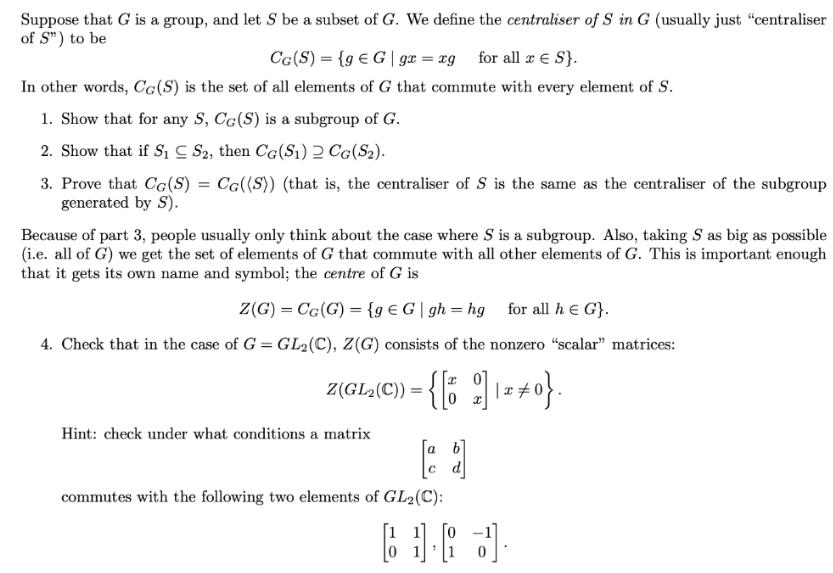Answered step by step
Verified Expert Solution
Question
1 Approved Answer
Suppose that G is a group, and let S be a subset of G. We define the centraliser of S in G (usually just

Suppose that G is a group, and let S be a subset of G. We define the centraliser of S in G (usually just "centraliser of S") to be CG(S) = {g G|gx=xg for all x S}. In other words, Cc(S) is the set of all elements of G that commute with every element of S. 1. Show that for any S, CG(S) is a subgroup of G. 2. Show that if S S2, then CG (S1) 2 CG (S). 3. Prove that CG(S) = CG((S)) (that is, the centraliser of S is the same as the centraliser of the subgroup generated by S). Because of part 3, people usually only think about the case where S is a subgroup. Also, taking S as big as possible (i.e. all of G) we get the set of elements of G that commute with all other elements of G. This is important enough that it gets its own name and symbol; the centre of G is Z(G) = Cc (G) = {g G | gh=hg for all h G}. 4. Check that in the case of G = GL(C), Z(G) consists of the nonzero "scalar" matrices: Z(GL2(C)) - {[5 2] 1+0}. Hint: check under what conditions a matrix c d commutes with the following two elements of GL(C): 6181
Step by Step Solution
There are 3 Steps involved in it
Step: 1
SOLUTION 556 For a circ...
Get Instant Access to Expert-Tailored Solutions
See step-by-step solutions with expert insights and AI powered tools for academic success
Step: 2

Step: 3

Ace Your Homework with AI
Get the answers you need in no time with our AI-driven, step-by-step assistance
Get Started


